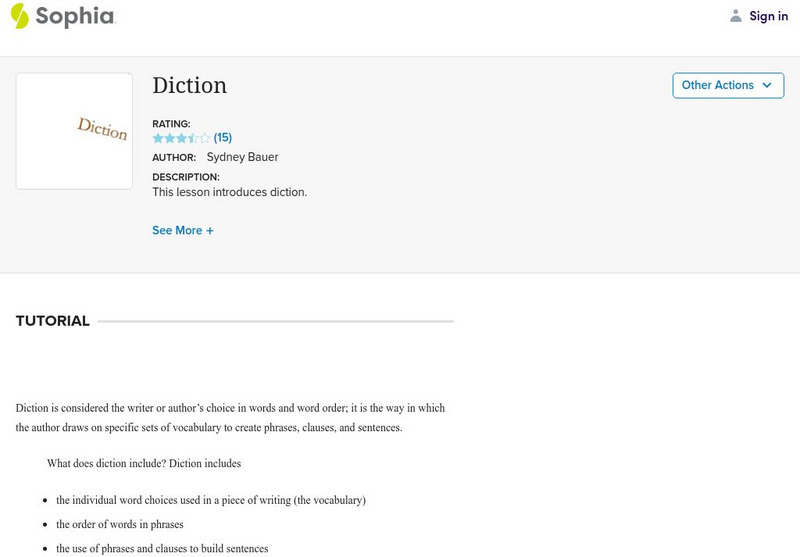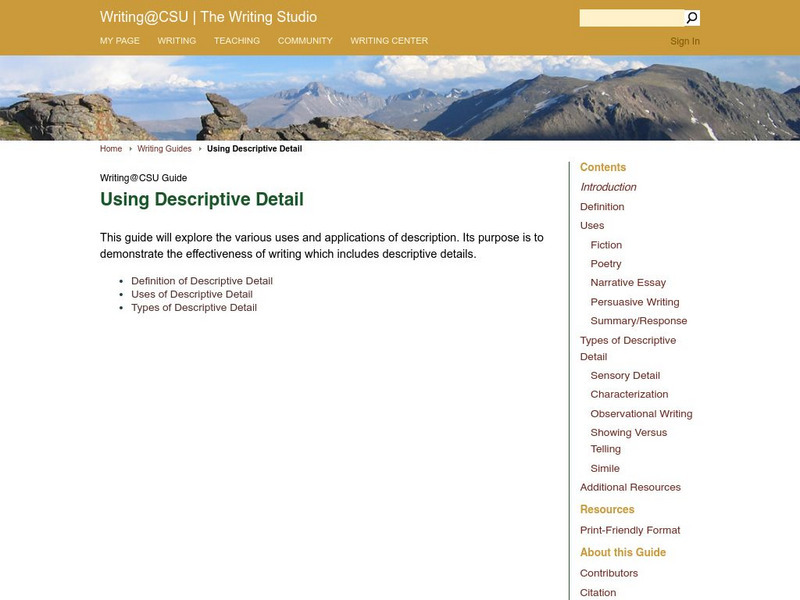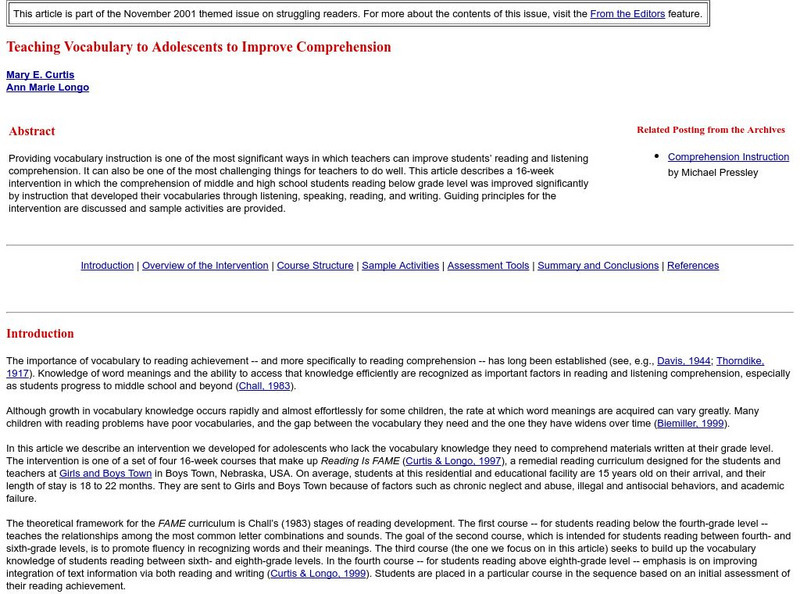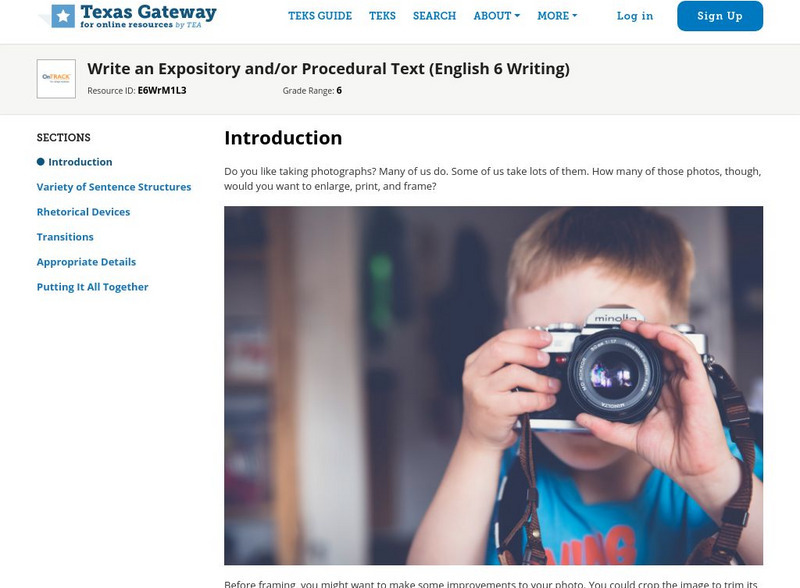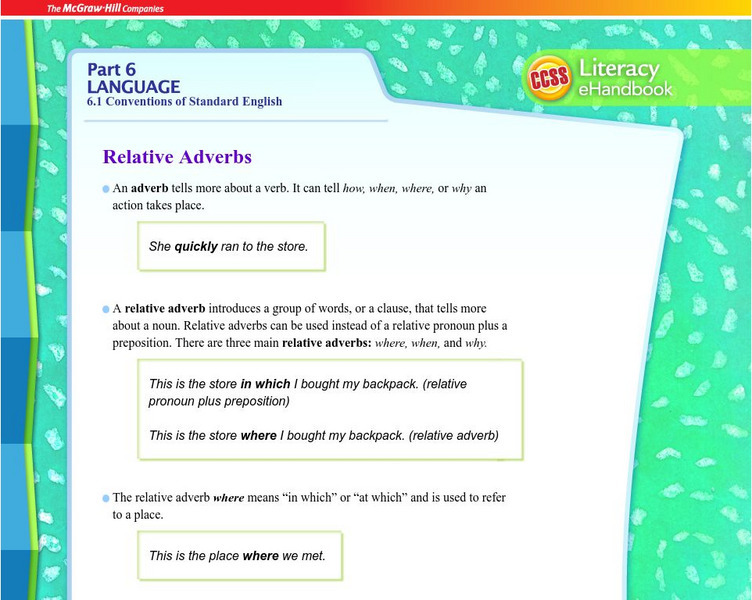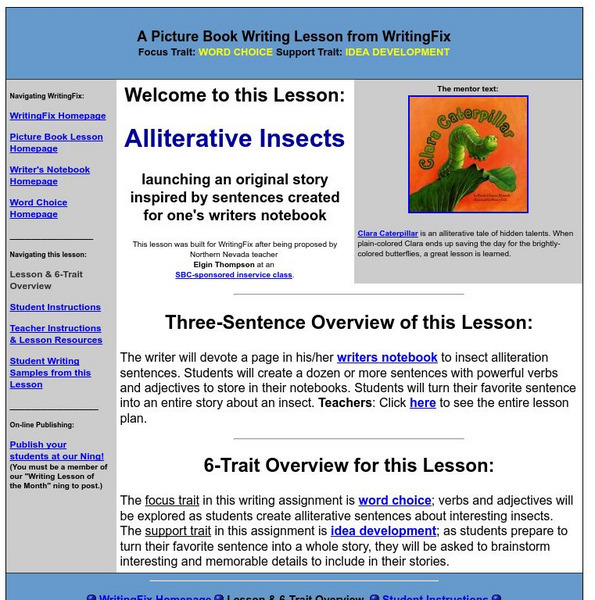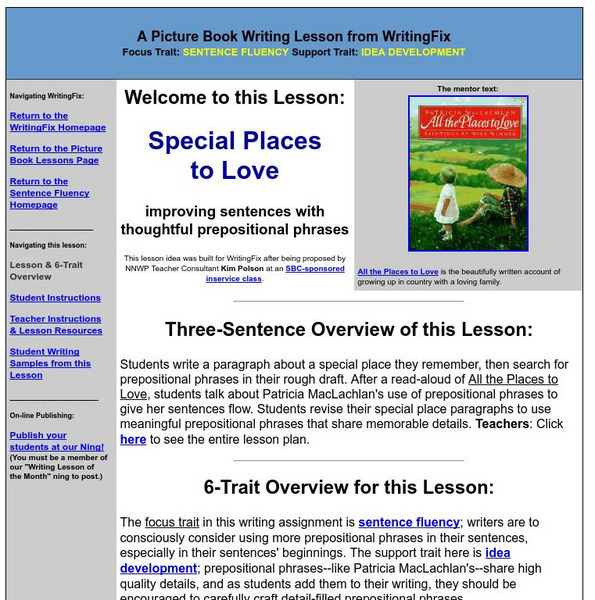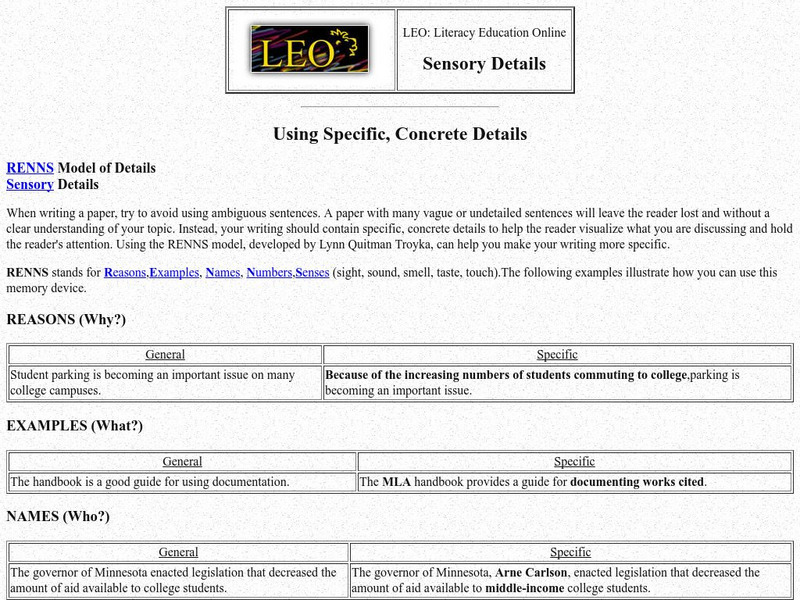Sophia Learning
Sophia: Diction
This lesson uses text and an accompanying audio to discuss diction including its definition, what it includes, and an explanation and an example of how word choice, word order, and phrasing can change the tone of writing.
Sophia Learning
Sophia: Topic Sentences
This slideshow lesson focuses on topic sentences; it defines them, gives the characteristics of effective topic sentences, tells what they are NOT, discusses how to create them, and provides examples of effective topic sentences.
Sophia Learning
Sophia: Topic Sentences: Map Your Way to Writing One
This tutorial on writing topic sentences includes 2 videos, 2 slide shows, and an audio clip. The first YouTube video explains the 4 parts of a topic sentence and tells where topic sentences belong. The 2 slide shows focus on the MAP...
Sophia Learning
Sophia: Using Sentence Structure (Part of Speech)
This slideshow lesson focuses on using sentence structure and parts of speech to determine the meaning of unfamiliar words. It explains how to look for parentheses or commas after unfamiliar words to help determine meaning; it also shows...
Colorado State University
Colorado State Writing Center: Using Descriptive Detail
This resource explores the various types and uses of descriptions in writing. Includes in-depth information about the definition, uses, and types of descriptive detail.
International Reading Association
Reading Online: Teaching Vocabulary to Adolescents to Improve Comprehension
An article highlighting the improvements of middle and high school students' reading comprehension through a sixteen-week program. Includes introduction, overview of the intervention, course structure, sample activities, assessments, and...
Texas Education Agency
Texas Gateway: Write an Expository And/or Procedural Text (English 6 Writing)
You will learn how to write an expository/procedural text with a variety of sentence structures, rhetorical devices, transitions, appropriate facts, and details.
Better Lesson
Better Lesson: Developing Characters and Experiences With Sensory Language
Adding sensory languages makes your writing so good you can see, hear, smell, taste and touch it. This lesson will show you how to use descriptive sensory language in order to develop and capture the experiences and characters in a...
Capital Community College Foundation
Guide to Grammar and Writing: Identifying Sentence Parts
The Guide to Grammar and Writing at this site provides an exercise of eight sentences where each word is hyperlinked to identify its role as a part of the sentence.
Capital Community College Foundation
Guide to Grammar and Writing: Definitions of Basic Sentence Parts
This site from Capital Community College Foundation provides all the different parts of speech and their definitions. It also shows word functions and their use.
Capital Community College Foundation
Guide to Grammar and Writing: Definition of a Sentence
The Guide to Grammar and Writing defines many of the terms common to sentence development, such as the parts of speech, or provides links for those definitions. Discusses strategies for adding variety to sentence structures. Includes...
Capital Community College Foundation
Guide to Grammar and Writing: Abstract, Concrete, General, and Specific Terms
Insightful, conversational discussion of the four terms and how each are needed to improve communication provided for by the Capital Community College.
Capital Community College Foundation
Guide to Grammar and Writing: Recognizing the Function of Phrases
In this quiz, students read the sentence, determine the function of the group of words in all capitals and select the correct answer. Java is required.
McGraw Hill
Mc Graw Hill Education: Language: Conventions: Relative Adverbs
Notes and examples explaining relative adverbs and how they are used in sentences. Includes practice worksheet.
ACT360 Media
Act Den: Writing Den
Need some extra help in spelling, grammar, and writing? Search no further. The writing den gives great tips for sentence structure and even on writing essays. A lot of great information for language arts students and teachers.
Writing Fix
Writing Fix: Show What Your Mind Sees
This writing activity asks writers to make use of both showing and telling as they create a well-organized paragraph of description. After reviewing showing versus telling by building a writer's notebook page, each writer will show what...
Writing Fix
Writing Fix: Serendipitous Character Descriptions
In this lesson, students create a unique character and develop a descriptive paragraph utilizing strong word choice.
Writing Fix
Writing Fix: Alliterative Insects
In this lesson students develop a story about an insect while utilizing previously written sentences with strong word choice.
Writing Fix
Writing Fix: Special Places to Love: Thoughtful Prepositional Phrases
In this lesson students learn to write meaningful prepositional phrases in order to evoke thoughtful word choice.
Writing Fix
Writing Fix: Inventing Stories for Your Favorite Clothes
In this lesson learners will write descriptors for a clothes catalogue.
Writing Fix
Writing Fix: Painting Places With Words
In this instructional activity students learn how to paint a setting with their descriptive choice of words.
Writing Fix
Writing Fix: Emotions and Colorful Days
In this lesson learners will learn to write descriptively.
Writing Fix
Writing Fix: Action Words Bring Life to Setting Details [Pdf]
Students learn how to develop their ideas through description and action words through a story scavenger hunt. [PDF]
The Write Place
Literacy Education Online: Sensory Details
This site provides several sample sentences which show sensory details and aid students in writing specific rather than general sentences. It is a good site for someone preparing to write a descriptive essay. W.9-10.3d Precise/sensory...


